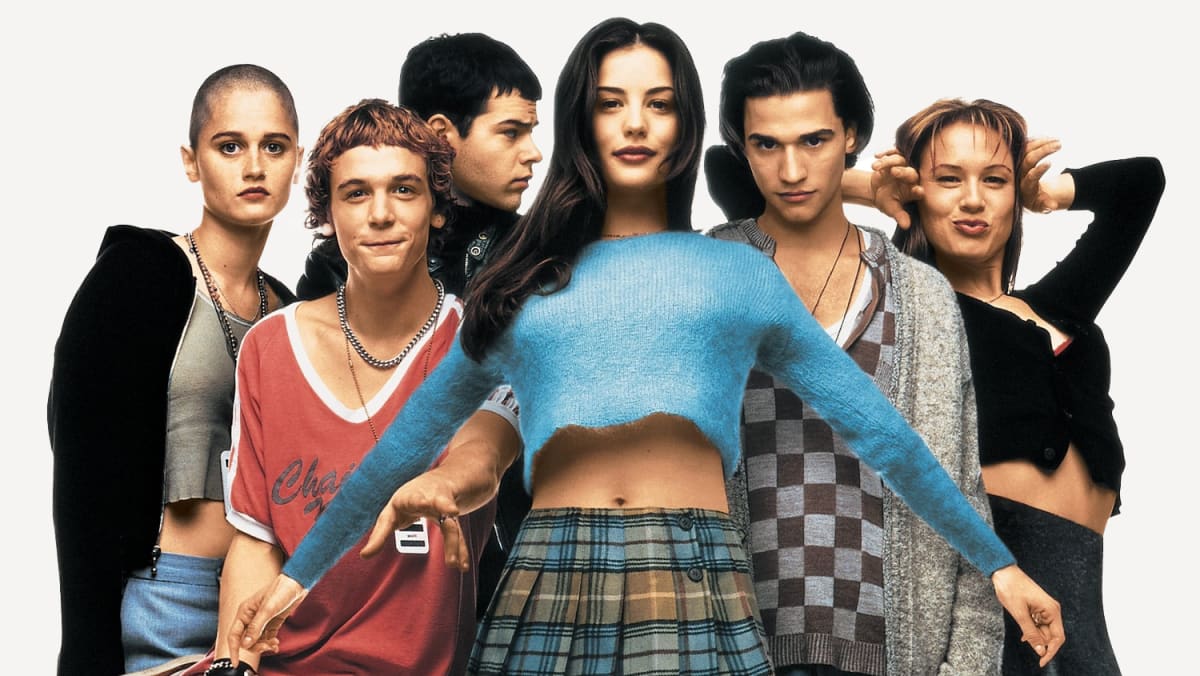A friend once asked me how I felt about the resurgence of 90s fashion. “Old” was my reply. I’m a proud Xennial (a very special microgeneration born between 1977 and 1983 that’s nestled between Gen X and millennials) who personally greeted adulthood as humankind bid goodbye to the 20th century. Still, I refuse to accept that so much time had passed that looks from my sartorial foundation years were now back in trend again. Even worse, that they were wholeheartedly embraced by a generation that couldn’t possibly understand what life was like before the digital age.
Could they truly understand the satisfaction of finally listening to a CD album you waited months for? (Pearl Jam’s Vs) Or having to schedule your day so you can rush home to watch your favourite television series? (The X-Files.) Or the anguish of losing Kurt Cobain, Brandon Lee and Tupac in close succession? (I remember wearing nothing but plaid shirts over band-emblazoned tees for the whole year that Cobain died, although my older brother assures me that I threw in overalls and bandanas occasionally for variation.)
But here we are with a whole generation of Zoomers who seem amusedly charmed with the bygone era. There’s even a word for it: Anemoia, coined by John Koenig in 2012 to describe nostalgia for a time one has not known. Nostalgia? What nostalgia? Didn’t the Nineties just happen, like, a decade ago? (Not really, but you know what I mean.)
The aesthetic was less about the actual outfit than it was about the grunge attitude of not caring, or at least the appearance of such. It was a rejection of the capitalised excesses of the 80s, its rigid definition of success and all the trappings that came with it – a rage against the machine; a rebellion dressed in an oversized denim jacket. Undoubtedly less violent and more sullen than the punk movement that came before, but an angst-riddled rebellion nonetheless despite the lack of safety pins.
In this respect, I can’t help musing if this perhaps explains the affinity that Zoomers feel towards the decade. Yes, it might seem like an absurd suggestion at first. This is, after all, a generation that grew up with convenience and instant gratification at every tap of the finger. Just what do they have to rage against? But with some imagination, you could almost draw parallels – if not between time frames, then social media platforms.
With the birth of Instagram in 2010 came a generation obsessed with picture-perfect posts of a picture-perfect life. (I think we’ve all seen enough white-and-beige interiors to last a lifetime.) It was the white picket fences of the 1950s brought back to life 70 years later, with filters and Photoshop coating everything with a veneer of impeccability.
Related:
Fashion logos decoded: The real meaning behind your favourite brands' designs | Interactive
Do you know what these fashion logos stand for? The stories behind Louis Vuitton, Chanel, Gucci, Dior and more
Even when #InstagramvsReality became a trend, exposing what really went on behind the scenes of a seemingly flawless shot, influencers and celebrities were still being called out for not keeping things real: Their “reality” shots were just slightly less edited versions of the final photo. Apparently, reality bites and not in the way the movie intended, either.
Fast forward to six years later, and TikTok would completely change the face of social media once more. Attracting a younger crowd that couldn’t care less for the manufactured perfection so desired by Instagrammers, TikTok started filling up with content that presented a wacky authenticity. It entertained with self-deprecating humour and instructed with as-you-see-it “how-to” videos, but always with a creative spin on capturing the moment as it is.
Anything else is perceived as (to borrow Gen Z speak) “sus”. This explains why luxury brands, so used to the poised and polished cultural mechanics of Instagram, have failed to connect to younger consumers through the app until quite recently.
Today, TikTok has superseded Facebook, Instagram and YouTube in popularity. The app has 1.8 billion active users per month, with 52.8 per cent of its content creators falling within the 18-24 age bracket – and every one of them is just as intent on living and dressing their “truth”, much like their counterparts from the 90s.
Sure, the black velvet ribbon chokers made so popular by stars like Winona Ryder and Drew Barrymore have since been replaced by colourful beads. Slip dresses are paired with oversized cardigans instead of the ripped fishnet stockings of Courtney Love. Tank tops are worn with nary a lacy brassiere peeking out, and combat boots shine with the freshness of having just come out of the box. The grungy “I slept in this outfit for three days” vibes have given way to a cleaner, more wholesome nuance – and thank goodness, considering Singapore’s hot climate.
Once I get over the shocking reminder of my actual age, I have to admit that it’s refreshing to see the threads of my youth interpreted through the eyes of a younger generation. Not to mention, it gives me a chance to bust out my comfy, buffet-friendly mum jeans in the name of fashion. So, go on looking snatched in those 90s outfits, Gen Z. This Xennial is all for it, and that’s on periodt.




